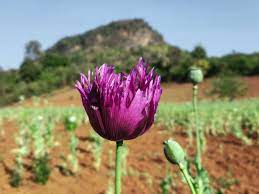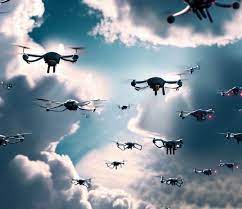Today’s Current Affairs: 18th Dec 2023 for UPSC IAS exams, State PSC exams, SSC CGL, State SSC, RRB, Railways, Banking Exam & IBPS, etc
Table of Contents
Indira Gandhi Zoological Park : Animal Exchange Programme

The Indira Gandhi Zoological Park (IGZP) , got two new species from Warangal Zoo as part of an animal exchange programme.
- As part of the exchange, the IGZP has received Mouse Deer (1 male, 2 female) and Chowsinga (four Horned antelope) (1 male, 2 female). In return, the zoo is sparing hog deer (1 male, 2 female), barking deer (1 male, 2 female) and Lutino Parakeets (1 male, 2 female)
Indira Gandhi Zoological Park (IGZP):-
- Located in Visakhapatnam district of Andhra Pradesh.
- The construction for this ex-situ facility started in the very year 1972 when Wildlife Protection Act of this country came into existence.
- It was opened to public on 19th May, 1977.
- It is surrounded by beautiful and scenic hills of Eastern Ghats on three sides and the Bay of Bengal on the fourth side.
- Being a Large category Zoo recognized by the Central Zoo Authority it houses 843 number of animals like mammals, carnivores, lesser carnivores, canids, ungulates, reptiles, birds and butterflies belonging to 123 species in a natural ambience.
- This place is also home to many free-ranging animals and birds owing to its existence in a forest area close to Kambalakonda Wildlife Sanctuary.
Second Phase Of Kashi Tamil Sangamam:

Prime Minister Shri Narendra Modi inaugurated the second phase of Kashi Tamil Sangamam on 17th December 2023.
- The Prime Minister, Shri Narendra Modi today called Kashi Tamil Sangamam forum a testament to the unity and diversity of India, strengthening the spirit of ‘Ek Bharat Shreshtha Bharat’.
- Kashi Tamil Sangamam : 17th to the 30th of December 2023 in Varanasi.
- It will celebrate the many aspects of the historical and civilizational connection between India’s North and South.
- Nearly 1400 people are expected to be travelling from different parts of Tamil Nadu, representing varied walks of life.
- The 7 groups of Students (Ganga), Teachers (Yamuna), Professionals (Godavari), Spiritual (Saraswati), Farmers and Artisans (Narmada), Writers (Sindhu) and Traders and Businessmen (Kaveri) have been named after seven sacred rivers of India will travel from Chennai, Coimbatore and Kanyakumari to Kashi.
- The Ministry of Education, Government of India, will be the nodal agency for this event with participation from the Ministries of Culture, Tourism, Railways, Textiles, Food Processing (ODOP), MSME, Information & Broadcasting, Skill Development & Entrepreneurship, IRCTC and related departments of Government of Uttar Pradesh.
- IIT Madras will be acting as the implementing agency in Tamil Nadu and Banaras Hindu University (BHU) in Uttar Pradesh.
E-Cigarettes : World Health Organization Statement

The World Health Organization (WHO) states that e-cigarettes, as consumer products, have not been proven effective for quitting tobacco use at the population level.
- E-cigarettes are battery-powered devices that heat a liquid into an inhalable aerosol.
- The liquid typically contains nicotine, propylene glycol, glycerin, flavourings, and other chemicals.
- Alternative Names E-cigarettes are also known as vape pens, vapes, electronic nicotine delivery systems (ENDS), electronic non-nicotine delivery systems (ENNDS), etc.
- Concerns E-cigarettes contain nicotine, causing addiction.
- E-cigarettes are highly addictive and harmful, with potential long-term health effects, including the generation of toxic substances linked to cancer and increased risks of heart and lung disorders
- Aerosols may contain metals (lead, chromium, nickel) and chemicals (formaldehyde)
- Children aged 13–15 are using e-cigarettes at rates higher than adults.
- Rates among 16–19-year-olds have doubled from 2017 to 2022.
- Nicotine A plant alkaloid found in tobacco and synthesized. It acts as a sedative and stimulant.
- Used in e-cigarettes with content up to 36 mg/mL,compared to 1.2 to 1.4 mg/mL in regular cigarettes which is recently classified as Class A poison in Karnataka.
- The Prohibition of Electronic Cigarette Act (PECA) 2019 in India prohibits the production, manufacture, import, export, transport, sale, distribution, storage, and advertisement of e-cigarettes.
2 Years Of Kashi Vishwanath Corridor:

Prime Minister of India has celebrated 2 years of Kashi Vishwanath Corridor.
- Kashi Vishwanath Corridor connects the iconic Kashi Vishwanath temple and the ghats along the river Ganga.
- Kashi Vishwanath Temple is one of the most famous Hindu temples dedicated to Lord Shiva.
- The temple stands on the western bank of the holy river Ganga and is one of the twelve Jyotirlingas, the holiest of Shiva temples.
- Kashi Vishwanath Dham has become one of the top pilgrimage spots in India as a record 12.9 crore devotees visited the shrine in two years.
Pandemic Accord:

The seventh round of deliberations on the Pandemic Accord was recently concluded by representatives from 28 countries.
- The accord aims to strengthen global prevention, preparedness, and response to disease outbreaks.
- The delegates failed to reach a consensus on Intellectual Property Rights and Relaxing Patents.
- The United States did not change its stance on the protection of Intellectual Property Rights (IPR), reiterating that canceling them would not improve access for poor countries during emergencies.
- Developed and developing countries had divergent opinions, with the former focusing on prevention and the latter demanding equitable access to medical products to be a guarantee in the treaty.
- The International Federation of Pharmaceutical Manufacturers and Associations was also in agreement when it came to retaining patent rights.
IUCN Red List Update 2023:

The International Union for the Conservation of Nature (IUCN) Red List underwent an update, featuring thousands of new species assessments and reassessments.
- This information was presented at the 28th Conference of Parties, shedding light on the escalating impacts of climate change on a diverse range of species.
- The IUCN Red List now includes 157,190 species, of which 44,016 are threatened with extinction.
Key Highlights of the Report:
- Species ranging from Atlantic salmon to green turtles face growing threats due to climate change.
- IUCN Director General, emphasises the urgency of ambitious climate action to combat species decline.
- The IUCN Red List update underscores the interlinked nature of climate and biodiversity crises, urging joint efforts for sustainable solutions.
- The first comprehensive assessment of global freshwater fish species is revealed.
- 25% of assessed freshwater fish species are at risk of extinction.
- Climate change, pollution, overfishing, and invasive species contribute to the decline.
- Atlantic salmon (Salmo salar) are ray-finned fish that can grow up to a meter long, found in the North Atlantic Ocean basin.
- They are anadromous, meaning they live in both fresh and saltwater.
- Atlantic salmon population declined by 23% (2006-2020), moving them from Least Concern to Near Threatened.
- Central South Pacific and East Pacific green turtle populations are respectively Endangered and Vulnerable.
- Climate change poses threats throughout their life cycle, impacting hatching success and food sources.
- The big-leaf mahogany (Swietenia macrophylla), a sought-after timber tree, shifts from Vulnerable to Endangered.
- Unsustainable harvest, urban encroachment, and illegal logging contribute to a 60% reduction over 180 years.
- Scimitar-horned oryx, a desert antelope moves from Extinct in the Wild to Endangered, showcasing successful reintroduction efforts in the Republic of Chad.
- Saiga antelope improves from Critically Endangered to Near Threatened due to conservation measures.
Southeast Asia Opium Survey 2023: UNODC

The United Nations Office on Drugs and Crime (UNODC) has released a report titled-Southeast Asia Opium Survey 2023 – Cultivation, Production, and Implications, highlighting that there is a significant increase in Opium Cultivation in the Golden Triangle, Southeast Asia.
Highlights of the Report:
- Opium cultivation in the Golden Triangle continued to expand over the past year 2022, with a significant increase in Myanmar.
- There’s been a 18% increase in Opium cultivation in Myanmar, reaching 47,100 hectares.
- This surge has made Myanmar the world’s largest source of opium, particularly due to disruptions following the Military Takeover in 2021.
- The average estimated opium yield per hectare expanded by 16% to 22.9 kilograms/hectare.
- This reflects advancements in farming practices and increased investments in irrigation systems and fertilizers, signaling a more sophisticated approach by farmers and buyers.
- Despite an expanding supply, the price paid to farmers increased by 27% to approximately USD 355 per kilogram.
- This price surge underscores the attractiveness of opium as a crop and commodity, indicating strong demand that fuels the opium trade in the Golden Triangle.
- The report anticipates that a protracted ban on opium in Afghanistan will likely lead to sustained high prices and further increases in cultivation in Southeast Asia.
- The Taliban’s ban has led to a 95% drop in the cultivation of opium poppies in Afghanistan
- The expansion of opium cultivation contributes to a broader illicit economy in the Mekong region (Cambodia, the People’s Republic of China (specifically Yunnan Province and Guangxi Zhuang Autonomous Region), Lao People’s Democratic Republic , Myanmar, Thailand, and Viet Nam).
- It fuels synthetic drug production and a convergence of drug trafficking, money laundering, and online criminal activities, generating significant profits for organized crime groups.
Global Partnership On Artificial Intelligence (GPAI) Summit:

The Prime Minister of India inaugurated the Global Partnership on Artificial Intelligence (GPAI) Summit.
- India is the lead chair of GPAI in 2024.
- The GPAI is an alliance of 28 countries; the European Union adopted the ‘New Delhi Declaration’ of the GPAI.
Highlights of the GPAI Summit:
- The Prime Minister of India discussed the national AI portal, highlighting the AIRAWAT initiative and raising concerns over the potential misuse of deep fake technology.
- YUVAi was prominently featured at the GPAI Summit, and the winners of the YUVAi initiative and start-ups showcased their AI models and solutions.
- The Prime Minister suggested using AI to make digital services available in local languages to increase digital inclusion.
- Responsible AI, data governance, future of work, and innovation and commercialization are the four different themes of four sessions organized in the GPAI.
- The summit also included various side events showcasing AI progress and engaging in discussions, such as industry panel discussions, workshops, research symposiums, hackathons, and the Global AI Expo.
Nyholm Prize:

Professor Savita Ladage from Mumbai received the Royal Society of Chemistry’s Nyholm Prize for Education in recognition of her contributions to chemistry education.
- Nyholm prize is awarded to inspirational, innovative and dedicated individuals or teams making a substantial and sustained impact within education.
- It celebrates individuals working in primary, secondary, further education, and higher education, encompassing teachers, technicians, and more.
- It recognises a major national or international research or innovation contribution to the field of chemical science education.
- This prize was established to commemorate the life and work of Sir Ronald Nyholm, president of the Royal Society of Chemistry from 1968 to 1970.
- It is awarded annually.
Surat Diamond Bourse : World’s Largest Corporate Office Hub

Prime minister is set to inaugurate the world’s largest corporate office hub, Surat Diamond Bourse.
- Surat Diamond Bourse is located in Khajod village, near Surat.
- It is the world’s largest corporate office hub, taking over the erstwhile top position of
- It will also be a global centre for trading both rough and polished diamonds as well as jewellery.
- Buyers from all corners of the world will get a global platform to trade at the Surat Diamond Bourse.
- It is built on 35.54 acres of land at a cost of Rs 3,400 crore.
- It is the world’s largest interconnected building, as it houses over 4,500 interconnected offices.
- The megastructure features 15 floors in addition to nine ground towers with office space ranging from 300 sq ft to 1 lakh sq ft.
- There is a central spine connecting the nine rectangular towers.
- The bourse will comprise a state-of-the-art ‘Customs Clearance House’ for Import-Export, a jewellery mall for retail jewellery business, and a facility for International Banking and Safe Vaults.
- It is the country’s largest customs clearance house.
- The building has the capacity to house 4,200 traders from 175 countries who will come to Surat to buy polished diamonds.
- The building showcases a cutting-edge rooftop solar energy project, ensuring sustainability in common areas and employing a radiant cooling system.
Bharat New Car Assessment Programme : First Round Of Crash Testing

The first round of crash testing of the cars under the Bharat New Car Assessment Programme (Bharat NCAP) has been successfully completed recently.
- It is an indigenous star-rating system for crash testing cars,under which vehicles will be assigned between one to five stars, indicating their safety in a collision.
- Bharat NCAP is an ambitious joint project between the Government of India (GoI) and Global NCAP, the regulatory body behind the safety crash test ratings.
- Objective is to help consumers make an informed decision before purchasing a car, thereby spurring demand for safer cars.
- Under the Bharat NCAP, cars voluntarily nominated by automobile manufacturers will be crash tested as per protocols laid down in the Automotive Industry Standard (AIS) 197.
- The programme is applicable to passenger vehicles with not more than eight seats in addition to the driver’s seat, with a gross vehicle weight not exceeding 3,500 kg.
- Only the base model of a particular variant will be tested.
- Besides internal combustion engine (ICE) models, CNG cars as well as battery-powered electric vehicles are eligible to undergo the safety test.
- Vehicles tested under the Bharat NCAP are evaluated across three critical safety domains: adult occupant protection, child occupant protection, and safety assist technologies.
- The test program is based on the AIS-197 standards. The selected test units will be sent to the nearest testing centre in coordination with the Central Institute of Road Transport (CIRT).
- Each car will go through five key tests: frontal impact, side impact, side pole impact, electronic stability control, and pedestrian-compliant front design.
- The tests will be performed with crash dummies and will also rate the safety features of cars.
- Following these tests, cars receive a rating of one to five stars, reflecting their safety performance.
- In contrast to Global NCAP’s separate Adult Occupant Protection (AOP) and Child Occupant Protection (COP) ratings, Bharat NCAP will offer a unified rating.
- It is a voluntary programme under which the cost of the car for assessment for star rating and the cost of such assessment are borne by the respective vehicle manufacturer or importer.
- There will be a Bharat NCAP Authority in India. The authority will also host the safety ratings of all new car models on a website for public knowledge.
- The central government can also ask the authority to select a particular variant of a model for assessment “in interest of public safety” at any of the designated crash test centres.
Swarm Drones:

The Indian Air Force (IAF) has chalked out the requirement for different mobile systems to counter threats in different operational scenarios, particularly those from multiple swarm drones.
- SWARM stands for “Smart War-Fighting Array of Reconfigured Modules.”
- A Swarm Drone typically consists of multiple drones working in coordination, communicating with one another, and sharing information to achieve a common objective.
- These drones can be of the same or different types, ranging from small quadcopters to larger fixed-wing drones.
- The swarm’s strength lies in its ability to function as a collective unit, leveraging swarm intelligence algorithms and advanced software to operate seamlessly and efficiently.
- These drones are equipped with Artificial Intelligence (AI) and can communicate with each other as well as with the control station.
- All the individual drones work in unison to complete tasks using distributed coordination, with each communication sent out by one drone providing the others with up-to-date information about their environment and roles in the mission.
- As their commands are based on real-time data, these swarms react quickly and precisely to changes in their surroundings.
- The swarm as a whole and individual drones can exercise great autonomy in seeking and engaging targets.
European Wood Bison : New Study

A new study has warned that the ongoing war in Ukraine could act as a spanner in the works for efforts to save the last remnant of the mega-fauna European wood bison.
- European wood bison:
- It is also known as wisent.
- European bison are the largest and heaviest land mammal in Europe.
- There were formerly three subspecies, although only one (Bison bonasus bonasus) remains – the other two are now extinct.
- It serves an important role as an ecosystem engineer, restoring grassland habitat.
- Conservation status:
- IUCN: Near Threatened
- Rapid environmental change and hunting by humans were the main drivers of the wisent’s extirpation across Europe.
- The scientists found that hunting caused range loss in the north and east of the wisent’s distribution, while land use change was responsible for losses in the west and south.




